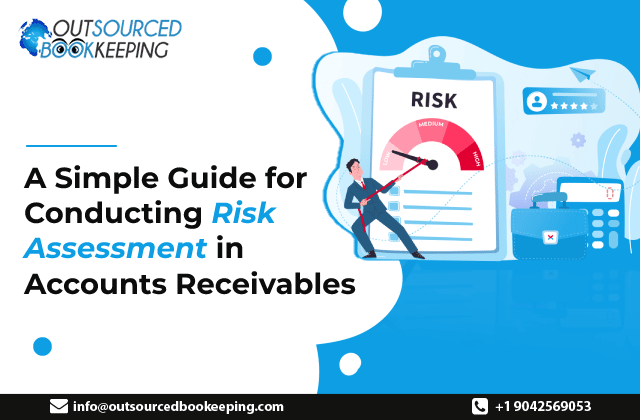The economic downturn triggered by the pandemic broke the cash flow of the majority of businesses around the world. The supply chain avalanche dwindled the Accounts Receivable and pushed them into disarray.
According to a study, the total unpaid invoices of small businesses rose to $825 million. More than 75% of businesses were left with less than 2 months of operating expenses. Naturally, the business had to shut down. Some of them are permanent. But few were able to mitigate the carnage of the pandemic and were able to pivot quickly – regular Accounts Receivable risk assessment is how.


As a remote accounting firm specializing in Accounts Receivable Services, risk assessment is regular in our stack of services. By conducting regular AR risk easements we were able to divert a cash flow avalanche and mitigate the potential wreckage. Just when the pandemic seems to have subsided, the trade war and recession seem to be looming in 2022. This is the right time for every business to mitigate the impact of this economic uncertainty and take remedial measures. Performing a thorough Accounts Receivable risk assessment is the first step to making this happen.
But most small and medium businesses with young AR teams do face a tough time in conducting Accounts Receivable Risk assessment audits. So with the inputs from our Accounts Receivable experts at Outsourced Bookkeeping, we have created this simple guide for you.
A 5-Step Guide for Conducting Risk Assessment in Accounts Receivables:
Segment your customers: The first step we take at Outsourced Bookkeeping is to analyse your Accounts Receivable to segment the customers based on multiple parameters. These parameters can include geography, trade sectors, customer base (size), product or service categories, term parameters, and receivable percentage.
This gives out the patterns that help us identify risky cases. Customers with sub-optimal payment practices or unfavourable credit policies, geographies that cause greater payment inconveniencies etc. This segmentation not only gives you greater visibility but also helps you common with tweaks that can significantly enhance your Accounts Receivable performance.
Fortify yourself and your bad debts: Now that you got a clear view of your customers, identify the cases that pose a greater risk to the health of your receivables. Lax payment terms and conditions, guarantees, remedial measures and more – focus particularly on high-ticket clients. This may include bonds, letters of credit, lien, comfort letters, asset transfers or receivable transfers. This not only gives you a fair estimation of potential losses but also helps you take remedial measures to level-up your collection in the future.
Take a close look at the AR ageing report: Ageing report gives you a simple way to know how well your credit and collection policies are working. It shows the unprocessed and unpaid invoices and credit memos to further aid your analysis in the first step. If the report is not pretty (deteriorating) then it’s time to investigate the reasons for late processing and payments before they aggravate to cause cash flow problems. This added to the segmentation of the customers in the first step gives you a much broader view of your hidden problems, their reasons and the clients causing them.
Get to know your customer industry: Now that you got to know how customers are performing w.r.t. to your receivables try to understand more about their industry, especially the ones that vest greater control in your receivables.
Getting to know about the industry and the customer will be of great help in crafting an efficient credit-to-cash policy. Understanding their business practices, compliance requirements, the industry needs production and inventory cycles and other aspects of the business can help you tailor your services with mutually beneficial terms and conditions. This understanding can also build a strong relationship which gives you a good ear to the ground when it comes to anticipating financial troubles. As a remote accounting firm that works with a wide variety of clients delivering versatile accounting functions, our industry knowledge has helped our clients craft an efficient and risk-averse Accounts Receivable policy.
Upskill your credit management team: All the above risk assessment steps are only part of a much larger guide that is customized for every industry niche. From calculating the right metrics to identifying risks, and making necessary tweaks to improving total AR collection, every business will need a tailored AR process that is incorporated with risk assessment steps. The only way to build and implement the strategy for better performance is to upskill the in-house AR team regarding the AR best practice in general and risk assessment in particular. Any business can quickly start this process by appointing a review team that tracks and monitors the accounts receivables and evaluates the risk and areas of improvement after which upskilling can be done to fill the gaps.
If you are a business that is short of time, capital or expertise to make this happen then the fastest and most affordable way to conduct a risk assessment is to hire a remote accounting firm specialising in AR risk assessments. As one of the top remote accounting firms with an excellent track record in Outsourced Accounts Receivable Services Outsourced Bookkeeping can surely lend a helping hand. You can contact us here: https://outsourcedbookeeping.com/






